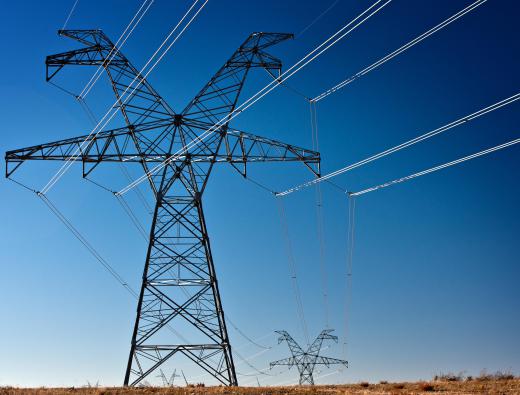Line voltage is simply the voltage that a power line delivers to its destination, or the point where it is being used. It is an important consideration for a number of applications, including household appliances and electronic devices. Although line voltage may change somewhat, it generally stays within a certain range, as standardized by individual countries. If line voltage increases unexpectedly, it is a condition known as a power surge.
In the United States, most power line voltage is standardized between 110 and 120 volts, though the actual power going into a home or building may fluctuate slightly. Most power companies try to ensure that their power systems provide no less than 114 volts of power and no more than 126 volts. This allows most electric devices inside an American home to function adequately, and also helps to prevent serious injury in the case of electric shock.

Some American appliances may require even more voltage in order to function. This is especially true of clothes dryers, which often require as many as 240 volts. Therefore, most homes will be wired both for high voltage and also a lower voltage in order to meet the requirements of this popular appliance. The plug for the higher voltage line is very unusual, so there is little danger of a standard electrical device being plugged into it.

In other portions of the world, line voltage is often higher than it is in the United States and Canada. For example, Europe, much of Africa and Asia have a voltage of 220. This means that some American and Canadian electronic devices would cease to function if taken overseas and plugged in. Devices especially suited for the traveling public, such as notebook computers and shavers, are often designed to work with either voltage level, but always be sure before plugging anything into an outlet with higher voltage.

One country, Japan, has a lower line voltage than the United States and Canada. There, 100 volts is typically the standard voltage. Typically, most electronic devices that are designed for American power systems will work in Japan, but some sensitive equipment may not.
If voltage unexpectedly increases because of malfunctioning equipment or lightning, a situation known as a power surge can have detrimental effects. This unregulated supply of power can enter a home and go into electronic devices causing the circuitry in them to no longer work, rendering the device useless. To protect against this, some people have installed surge protectors to the more expensive pieces of electronic equipment.
